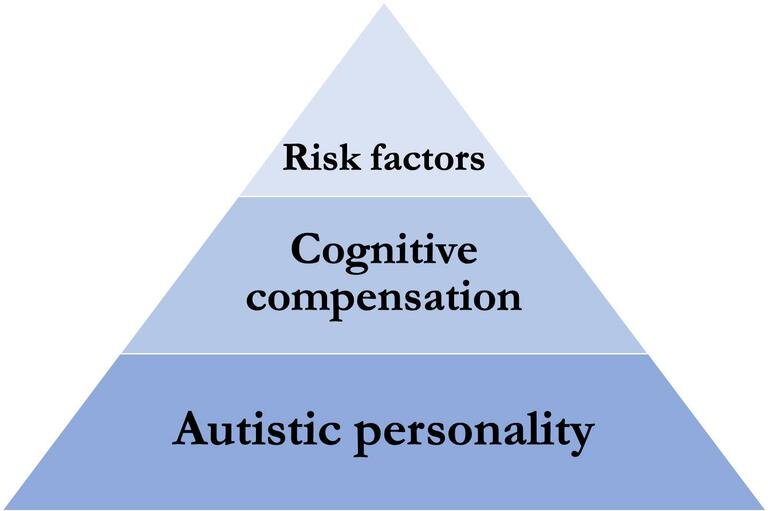
The development of autism may now become easier to understand, thanks to an explanatory model presented in a thesis from University of Gothenburg. This model provides new insights into how various risk factors give rise to autism and why there is such great variability between individuals.
Autism, a neurodevelopmental condition, affects how people perceive the world around them and how they interact and communicate with others. Among individuals with autism, there are major differences in terms of personal traits and manifestations alike. The disorder is therefore usually described as a spectrum, with numerous subtle variations.
The new explanatory model is theoretical but simultaneously practical in application, since its various components are measurable through, for example, questionnaires, genetic mapping, and psychological tests. The model describes various contributing factors and how they combine to prompt an autism diagnosis and cause other neurodevelopmental conditions.
Three contributing factors
The model links three contributing factors. Together, these result in a pattern of behavior that meets the criteria for an autism diagnosis:
“The autistic personality is associated with both strengths and difficulties in cognition but does not, as such, mean that diagnostic criteria are fulfilled. Still, exposure to risk factors that inhibit people’s cognitive ability may affect their capacity to tackle difficulties, which contributes to individuals being diagnosed with autism,” says Darko Sarovic, physician and postdoctoral researcher at Sahlgrenska Academy, University of Gothenburg, who wrote the thesis.
The model makes it clear that it is the many different risk factors combined that bring about the major differences among individuals on the spectrum. The various components of the model are supported by results from previous research.
Adaptive ability
High executive functioning skills may enable people to compensate for their impairment in such a way as to mitigate the symptoms, which reduces their risk of meeting the diagnostic criteria for autism. This may explain why, at group level, researchers observe a lower degree of intelligence among people diagnosed with autism, as well as other neurodevelopmental conditions. It also affords an understanding of why intellectual disability is more common among these groups. Thus, the model indicates that low cognitive ability is not part of the autistic personality but, rather, a risk factor that leads to diagnostic criteria being met.
“The autistic personality is associated with various strengths. For example, parents of children with autism are overrepresented among engineers and mathematicians. The parents themselves have probably been able to compensate for their own autistic personality traits and thus not met the criteria for an autism diagnosis. The impact of the disorder has then become more noticeable in their children owing, for instance, to an exposure to risk factors and relatively low cognitive ability,” Sarovic says.
Difference between girls and boys
The diagnosis of autism is more common among boys than girls, and girls often get their diagnosis later in life. Some girls reach adulthood before being diagnosed, after many years of diffuse personal difficulties.
“Girls’ symptoms are often less evident to other people. It’s well known that girls generally have more advanced social skills, which probably means that they’re better at compensating for their own difficulties. Girls also tend to have fewer autistic traits and be less susceptible to the effects of risk factors. Accordingly, the model can help to answer questions about the gender gap,” Sarovic says.
Research and diagnostics
The model also proposes ways of estimating and measuring the three factors (autistic personality, cognitive compensation and exposure to risk factors). This makes it possible to use the model in the planning of research studies and interpretation of their results.
Diagnostics is another conceivable area of use. In a pilot study in which 24 participants had been diagnosed with autism and 22 controls had not, measuring the three factors of the model enabled more than 93% to be correctly assigned to the right category. The model can also be used to explain the inception of other neurodevelopmental disorders, such as schizophrenia.
More information:
Thesis: A Multimodal Approach toward the Biological Categorization of Autism—Development of Theoretical Models, Classification Methods, and Biomarkers; hdl.handle.net/2077/73553
Darko Sarovic, A Framework for Neurodevelopmental Disorders: Operationalization of a Pathogenetic Triad, (2019). DOI: 10.31234/osf.io/mbeqh
Darko Sarovic et al, Autism classified by magnetic resonance imaging: A pilot study of a potential diagnostic tool, International Journal of Methods in Psychiatric Research (2020). DOI: 10.1002/mpr.1846
Darko Sarovic et al, Pareidolia as a probe for early and late face processing components in autism: A magnetoencephalographic study. (manuscript under review)
Elena V. Orekhova et al, Neural gain control measured through cortical gamma oscillations is associated with sensory sensitivity, Human Brain Mapping (2018). DOI: 10.1002/hbm.24469
Journal information:
Human Brain Mapping
Source: Read Full Article
